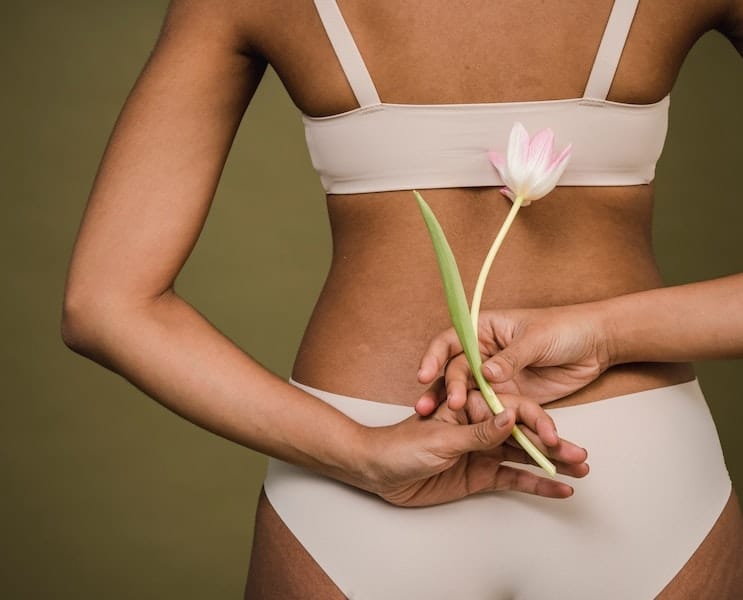The effect of female syndromes on the skin

Puberty, pregnancy, the menopause… Every month, women experience their menstrual cycle and the hormonal upheaval that goes with it. While variations in hormone levels (oestrogen, progesterone, etc.) affect mood, fatigue and appetite, they also have a direct effect on the appearance of the skin. At each major stage of the cycle, changes can occur: the complexion becomes duller, the skin drier (or oily) and pimples appear at certain times.
Fortunately, these menstrual cycle problems can be alleviated with natural solutions, thanks to cosmetics.
Without further ado, discover the effects of the menstrual cycle on your skin.
The appearance of the skin during the menstrual phase
The first phase of the menstrual cycle, menstruation is the best known of all. During this phase – which generally lasts between 3 and 7 days – the skin becomes more sensitive and inflammatory reactions occur. For example, some women notice the appearance of pimples and blackheads on their face during this period. Another effect linked to the drop in hormone levels is that blood circulation slows down, resulting in dull, dehydrated skin.
To reduce the symptoms linked to this drop in hormones, everything (or almost everything) comes down to what you eat! The first piece of advice is to reduce your consumption of dairy products, alcohol and coffee. Conversely, now is the time to opt for foods rich in omega-3s, such as fish at the end of the chain, nuts, avocado, etc..
The menstrual phase is also the ideal time to soften the skin without clogging the pores, by applying creams that are rich in water and preferably non-greasy.
The appearance of the skin during the follicular phase
After menstruation, the body prepares for ovulation by producing follicle-stimulating hormone (FSH), a hormone capable of stimulating the ovaries to produce oestrogen: this is the follicular phase. From the 1st to the 14th day of this period, hormone levels increase gradually, reaching a peak before ovulation. This is when the skin is at its most luminous. Thanks to the particularly high level of oestrogen, blood circulation is activated and the complexion becomes more radiant.
More receptive to skin care, the follicular phase is the ideal time to eliminate dead cells by exfoliating the skin with gentle scrubs.
The appearance of the skin during the ovulatory phase
During the ovulatory phase, which generally lasts 28 days, the influx of oestrogen triggers the release of luteinising hormone, or LH. It is thanks to this hormone that the ovary is able to release a mature egg: this is ovulation.
At this stage of the menstrual cycle, the skin is supple, elastic and firm. This is a direct consequence of the presence of oestrogen, which plays a major role in collagen production. However, increased testosterone levels can be responsible for the development of blemishes on acne-prone skin.
For this reason, the ovulatory period can be a good time to look after your diet and lifestyle, while applying nourishing creams to the skin on your face.
The appearance of the skin during the luteal phase
The last period of the cycle, the luteal phase (also known as the post-ovulatory phase) corresponds to the sudden drop in oestrogen levels in the absence of pregnancy. In response, the sebaceous glands begin to produce more sebum, resulting in oilier, shinier skin than usual. The result? Pores become clogged, encouraging the appearance of blackheads. That’s why, a few days before your period starts, you may notice the famous acne flare-up.
To prevent imperfections and rebalance the skin, it is important to cleanse the skin thoroughly, using a mild antibacterial soap that does not dry out the skin. Don’t forget to remove any make-up residue before going to bed!
As you can see, our skin type changes in response to the hormonal variations in your menstrual cycle, but also over the course of your life. The appearance of pimples and the elasticity and hydration of your skin therefore vary according to the time of your cycle. By adapting your skincare routine, you’ll be able to treat your various skin problems, such as acne. However, you should be aware that female syndromes are not the only cause of your skin problems. Diet, lifestyle, stress and even genetics all play their part!